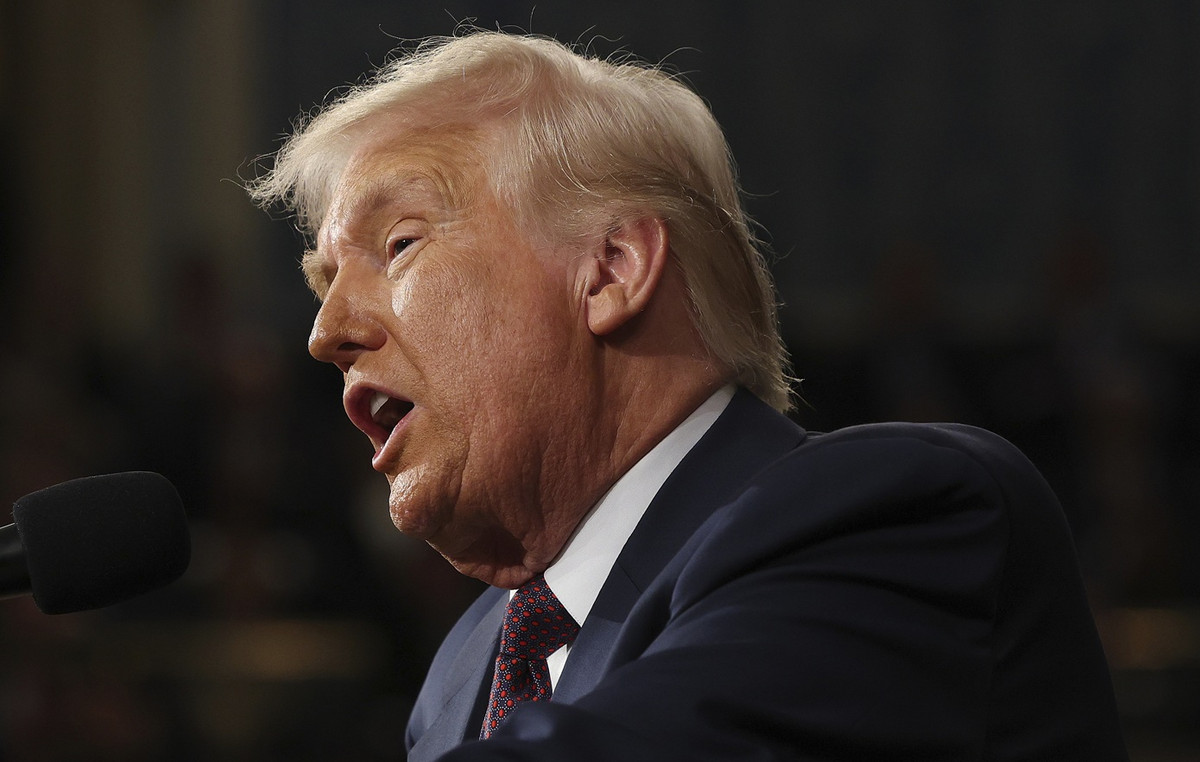- The Japanese Yen continues its struggle to gain significant traction on Wednesday.
- Fears of intervention support the Yen, although uncertainty over the BoJ's monetary policy limits gains.
- The release of FOMC minutes is expected for clues on the Fed's rate cut path, which could generate fresh momentum in the pair.
The Japanese Yen (JPY) remains within a known range against the US Dollar (USD) during the European session on Wednesday, influenced by a combination of divergent forces. The recession in Japan fueled uncertainty over the likely timing of the Bank of Japan (BoJ) abandoning the negative interest rate policy, which in turn is seen as a key factor weakening the Yen. That said, recent verbal intervention from Japanese authorities, coupled with a generally softer risk tone around equity markets, lend some support to the safe-haven JPY.
On the other hand, the US dollar remains on the defensive, near its lowest level in almost three weeks, as investors look for more clues on the Federal Reserve's (Fed) rate cut path before opening directional positions. Therefore, attention remains focused on the release of the FOMC meeting minutes, which will play a key role in influencing the USD price dynamics and providing fresh directional impetus to the USD/JPY pair. Meanwhile, rising US Treasury yields could continue to act as a tailwind for the Dollar and help limit the pair's decline.
Daily Market Summary: Japanese Yen Extends Range Move Amid Mixed Fundamental Signals
- Fears that Japanese authorities will intervene in the markets to curb the weakness of the national currency and a softer risk tone lend some support to the safe-haven Japanese Yen.
- Japanese Finance Minister Shunichi Suzuki reiterated on Tuesday that the government is monitoring currency movements with a high sense of urgency and that the exchange rate is set by a number of factors.
- Additionally, Atsushi Mimura, a Japanese Finance Ministry official, said the government can sell assets such as foreign savings and bonds in foreign exchange reserves when intervention is necessary.
- Mimura added that Japan always communicates and coordinates with other countries in case of intervention in the foreign exchange market and is conscious of maintaining security and ensuring liquidity in the management of foreign exchange reserves.
- Data published this Wednesday showed that Japanese exports grew more than expected in January, although the drop in imports, greater than estimated, pointed to sluggish domestic demand and the weakness of the economy.
- Exports grew 11.9% year-on-year in January, the highest since November 2022, compared to the expected 9.5% drop, while imports contracted 9.6%, resulting in a smaller-than-expected deficit of 1,758 billions of yen.
- According to the Reuters Tankan survey, business confidence among Japanese manufacturers fell in February from the previous month's reading of 6 to -1, marking the first negative reading since last April.
- This comes on top of a technical recession in Japan, which could derail the Bank of Japan's plan to abandon its ultra-loose policy this year and is holding back Yen bulls from opening aggressive positions.
- The US dollar struggles near its lowest level in more than two weeks amid expectations that the Federal Reserve will begin cutting interest rates in the coming months, limiting the rise of the USD/JPY pair.
- Investors now await the release of the FOMC meeting minutes for clues on the Fed's rate cut path, which will boost demand for the USD and provide a significant boost to the pair.
Technical Analysis: USD/JPY consolidates in a range around the 150.00 level before the next move
From a technical standpoint, the recent range-bound price action warrants some caution before positioning for a firm near-term direction. That said, the recent break of the 148.70-148.80 horizontal barrier favors the bulls. Furthermore, the oscillators on the daily chart remain in positive territory and are still far from the overbought zone, validating the constructive outlook for the USD/JPY pair. However, it would be prudent to wait for buying beyond the 150.00 level and the 150.85-150.90 area, a multi-month high set last week, before positioning for further rallies. Further up, the pair could rise to the intermediate barrier of 151.45 on its way towards the 152.00 area, a multi-decade high established in October 2022 and revisited in November 2023.
On the other hand, weakness below the 149.50 area could attract some buyers near the 149.25-149.20 area. This zone is followed by the round level of 149.00 and the resistance-turned-support of 148.80-148.70, which should act as a key fundamental point. A convincing break below this last level will suggest that the USD/JPY pair has formed a short-term high and will set the stage for a significant corrective decline. The decline has the potential to drag the pair to the 148.35-148.30 region on the way towards the 148.00 round level and the 100-day SMA support near the 147.70 area.
Japanese Yen prices today
Below is the percentage evolution of the Japanese Yen (JPY) against the major currencies today.
| USD | EUR | GBP | CAD | AUD | JPY | NZD | CHF | |
| USD | 0.00% | -0.01% | -0.01% | -0.04% | 0.06% | -0.12% | -0.03% | |
| EUR | 0.01% | 0.00% | 0.00% | -0.03% | 0.06% | -0.11% | -0.03% | |
| GBP | 0.00% | 0.00% | 0.01% | -0.03% | 0.07% | -0.11% | -0.02% | |
| CAD | 0.01% | 0.00% | -0.01% | -0.04% | 0.05% | -0.12% | -0.02% | |
| AUD | 0.05% | 0.02% | 0.03% | 0.03% | 0.09% | -0.11% | 0.00% | |
| JPY | -0.06% | -0.05% | -0.06% | -0.07% | -0.09% | -0.18% | -0.07% | |
| NZD | 0.12% | 0.11% | 0.11% | 0.12% | 0.07% | 0.19% | 0.09% | |
| CHF | 0.03% | 0.03% | 0.03% | 0.03% | 0.01% | 0.09% | -0.08% |
The heat map shows the percentage changes of the major currencies against each other. The base currency is chosen in the left column, while the quote currency is chosen in the top row. For example, if you choose the euro in the left column and scroll down the horizontal line to the Japanese yen, the percentage change that appears in the box will represent EUR (base)/JPY (quote).
Frequently Asked Questions about the Japanese Yen
What factors determine the price of the Japanese Yen?
The Japanese Yen (JPY) is one of the most traded currencies in the world. Its value is determined broadly by the performance of the Japanese economy, but more specifically by the policy of the Bank of Japan, the differential between the yields of Japanese and US bonds or the risk sentiment among traders, among other factors.
How do decisions by the Bank of Japan affect the Japanese Yen?
One of the mandates of the Bank of Japan is currency control, so its movements are key for the Yen. The BoJ has intervened directly in currency markets on occasion, usually to lower the value of the Yen, although it often refrains from doing so due to the political concerns of its major trading partners. The BoJ's current ultra-loose monetary policy, based on massive stimulus to the economy, has caused the depreciation of the Yen against its main currency pairs. This process has been exacerbated more recently by a growing policy divergence between the Bank of Japan and other major central banks, which have opted to sharply raise interest rates to combat decades-old levels of inflation.
How does the spread between Japanese bond yields and US bond yields affect the Japanese Yen?
The Bank of Japan's ultra-loose monetary policy stance has led to increased policy divergence with other central banks, particularly the US Federal Reserve. This favors the widening of the spread between US and Japanese 10-year bonds, which favors the Dollar against the Yen.
How does general risk sentiment influence the Japanese Yen?
The Japanese Yen is often considered a safe haven investment. This means that in times of market stress, investors are more likely to put their money in the Japanese currency due to its supposed reliability and stability. In turbulent times, the Yen is likely to appreciate against other currencies that are considered riskier to invest in.
Source: Fx Street
I am Joshua Winder, a senior-level journalist and editor at World Stock Market. I specialize in covering news related to the stock market and economic trends. With more than 8 years of experience in this field, I have become an expert in financial reporting.







